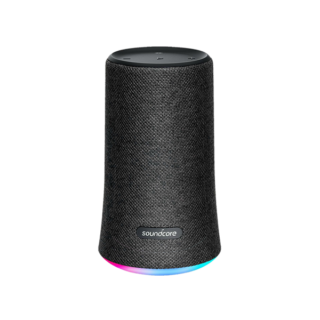Category
Popular
-
 Suspendisse gravida lacus varius
Rated 1.00 out of 5
Suspendisse gravida lacus varius
Rated 1.00 out of 5$33.00Original price was: $33.00.$22.00Current price is: $22.00. -
 Aliquam erat volutpat
Rated 2.00 out of 5$50.00
Aliquam erat volutpat
Rated 2.00 out of 5$50.00 -
 In fringilla felis non nulla porta rutrum
Rated 3.00 out of 5
In fringilla felis non nulla porta rutrum
Rated 3.00 out of 5$78.00Original price was: $78.00.$65.00Current price is: $65.00. -
 Suspendisse volutpat massa
Rated 4.00 out of 5$39.00
Suspendisse volutpat massa
Rated 4.00 out of 5$39.00 -
 Cras viverra rhoncus
Rated 5.00 out of 5$84.00
Cras viverra rhoncus
Rated 5.00 out of 5$84.00

Essential Features and Functionalities
Creating a website with the scope and scale of Amazon requires the integration of several critical features and functionalities designed to enhance user experience and operational efficiency. A user account management system is fundamental; it allows customers to sign up, log in, manage their profiles, and track their orders effectively. This functionality ensures secure, personalized shopping experiences and facilitates customer retention.
Advanced search capabilities powered by algorithms are essential for helping users find products quickly and accurately. A multi-faceted search bar that includes filters for categories, price ranges, brands, and other attributes can significantly improve the shopping experience. Furthermore, robust product listings complete with detailed descriptions, images, videos, and user reviews help in making informed purchasing decisions.
Amazon’s success can be attributed in part to its sophisticated recommendation algorithms, which analyze user behavior and preferences to suggest relevant products. Implementing a similar recommendation engine on your website can boost cross-selling and upselling opportunities, ultimately increasing sales.
A seamless shopping cart functionality is mandatory for any e-commerce platform. The cart should allow users to add, remove, and review items easily while displaying an updated total cost. Integration with secure payment gateways is equally critical. These gateways must support multiple payment options, including credit cards, digital wallets, and even cryptocurrencies, to cater to a broad customer base. Ensuring that these transactions are encrypted will help build trust and protect sensitive information.
An intuitive, user-friendly interface complemented by a responsive design will dramatically enhance user satisfaction. The website should be accessible and perform consistently across various devices and screen sizes, ensuring a smooth experience whether users are on a desktop, tablet, or smartphone.
Customer support tools such as live chat, FAQs, and a robust ticketing system also play a vital role. These features enable quick resolution of queries and issues, thereby improving customer satisfaction and loyalty.
Multi-vendor management systems are another crucial component, especially for platforms looking to replicate Amazon’s marketplace model. These systems allow multiple sellers to manage their listings, inventory, and orders independently, providing a diverse product selection to customers.
Inventory management is an often-overlooked yet vital aspect. Accurate, real-time inventory tracking prevents stockouts and overstock situations, ensuring that the supply chain runs smoothly.
In summary, emulating Amazon’s robust feature set requires a comprehensive approach, balancing user experience and back-end functionality. By incorporating these essential features and functionalities, you can create a competitive, scalable e-commerce platform.
Technical Stack and Development Process
Creating a website akin to Amazon requires a robust technical stack and a methodical development process. The technical stack encompasses the combination of technologies used for both the back-end and front-end operations. For the front-end, popular choices include HTML, CSS, and JavaScript, along with libraries and frameworks like React or Angular. These tools ensure a dynamic, responsive, and user-friendly interface that caters to a seamless user experience.
On the back-end, the technology choices become more diverse. Frameworks like Node.js can be optimal for creating a scalable and high-performance server environment. Alternatively, Python with Django or Flask frameworks, and Java with Spring Boot, are also powerful choices for building reliable back-end architectures. Key programming languages in this domain include JavaScript, Python, Java, and PHP, among others.
Databases play a critical role in managing the extensive data typical of a large e-commerce platform. Both SQL-based databases like MySQL and PostgreSQL, as well as NoSQL databases like MongoDB, can be utilized based on the nature of data workloads. For a solution that blends the advantages of relational and non-relational databases, consider using hybrid databases like Amazon Aurora.
Cloud services are integral to the scalability and performance of a large-scale e-commerce platform. Providers like Amazon Web Services (AWS) offer a myriad of tools for hosting, storage, and deploying your application securely and efficiently. By leveraging platforms like AWS, businesses can scale their resources based on real-time demand, ensuring high availability and performance.
The development process must be seamless and well-organized, beginning with thorough planning and prototyping. This phase involves defining the project scope, user requirements, and creating wireframes or mockups. The development phase follows, where the actual coding is done based on the earlier plans. Testing is a critical phase to weed out any bugs and ensure each feature works as intended, followed by the deployment phase where the website goes live.
Integrating third-party services like payment gateways and shipping solutions is essential for functional e-commerce platforms. Utilizing APIs can streamline the integration process, allowing your website to offer a multitude of services efficiently. Additionally, continuous maintenance and updates are necessary to keep up with technological advancements and evolving user demands, ensuring the website remains secure and up-to-date.
Written by namanalaamri92@gmail.com
Product Showcase








Leave a Reply